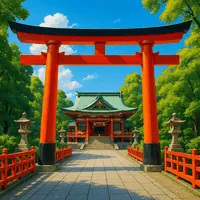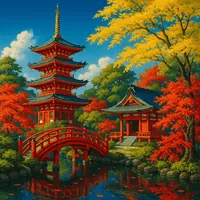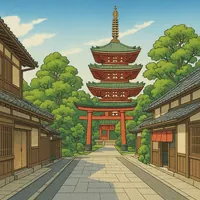Fuchū in Tōkyō stands out for housing the centuries-old Ōkunitama Shrine, a cultural heart hosting the Kurayami Festival—one of Japan’s oldest nighttime festivals. Unlike central Tokyo's neon chaos, Fuchū blends Edo-period history with modern horseracing at Tokyo Racecourse, creating a rare fusion of sacred tradition and thrilling spectacle within a single neighborhood.
Notable points about Fuchū
- Fuchū, Tōkyō is uniquely home to the Ōkunitama Shrine, one of the oldest in Japan, anchoring the city’s identity with deep-rooted Shinto traditions and the vibrant Kurayami Matsuri (Darkness Festival).
- Unlike central Tōkyō’s dense urbanity, Fuchū blends suburban calm with rich Edo-period history, offering a slower, heritage-rich atmosphere just 25 minutes from Shinjuku.
- The best time to visit is during Golden Week in early May, when the Kurayami Matsuri lights up the city with floats, lanterns, and traditional horseback archery.
- Fuchū offers more affordable accommodations and dining than central Tōkyō, making it ideal for budget-conscious travelers looking for authenticity without high costs.
- Participating in a local Shinto ritual at Ōkunitama Shrine or watching yabusame (horseback archery) immerses visitors in centuries-old samurai culture still alive today.
- Don’t miss the local specialty “Fuchū-don,” a hearty rice bowl topped with seasonal vegetables and meat, often found in family-run eateries around Fuchū-Hommachi.
- The Keio Line and JR Musashino Line make Fuchū incredibly accessible, and renting a bike at Fuchū Station lets visitors explore quiet residential streets and lush riverside trails.
- Discover the Fuchū Kyōdo no Mori museum park—a peaceful open-air gem with restored Edo-era buildings, bamboo groves, and a plum blossom festival in February.
- Fuchū is safe and family-friendly; English signage is limited, but locals are helpful—just remember to bow slightly and say “sumimasen” when seeking assistance.
- A sunset walk along the Tama River embankment, where locals jog and kids play, offers a heartfelt glimpse into everyday Japanese life and an unexpectedly serene memory of Tōkyō.



